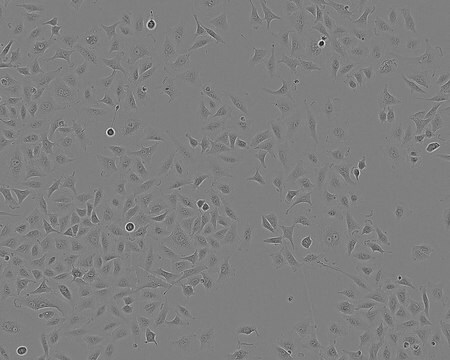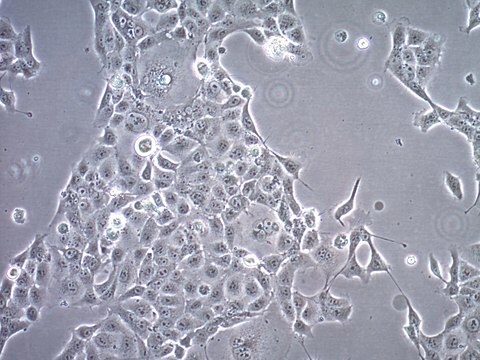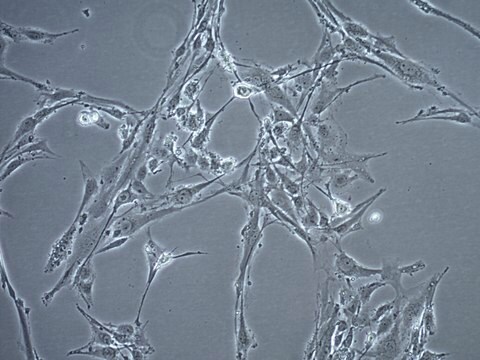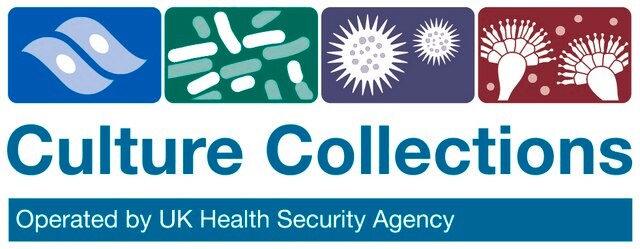NCI-H322 Cell Line human
95111734, human lung (cervical node metastasis), Not specified
Synonym(s):
H322 Cells, NCI-322 Cells, NCI-H322T Cells
Sign Into View Organizational & Contract Pricing
All Photos(1)
About This Item
UNSPSC Code:
41106514
Recommended Products
product name
NCI-H322 Cell Line human, 95111734
biological source
human lung (cervical node metastasis)
description
Human Caucasian bronchioalveolar carcinoma
growth mode
Adherent
karyotype
Not specified
morphology
Not specified
products
Not specified
receptors
Not specified
technique(s)
cell culture | mammalian: suitable
relevant disease(s)
metastasis
shipped in
dry ice
storage temp.
−196°C
Cell Line Origin
Human Caucasian bronchioalveolar carcinoma
Cell Line Description
NCI-H322 was derived in 1981 from a primary bronchioalveolar carcinoma of the lung from a 52 year old male taken prior to treatment. Ultrastructural studies of this non-small cell carcinoma cell line demonstrated the presence of cytoplasmic structures characteristic of Clara cells. NCI-H322 do not express UDP-glucuronosyltransferase, but are reported to express glutathione-S-transferase and phenol sulfotransferase. Expression of protein and RNA of SP-A, the major surfactant-associated protein was detected. The cells produce tumours in athymic mice.
Application
NCI-H322 has been used to study the preclinical antitumor efficacy of BAY 1129980, which is an anti-C4.4A (Ly6/PLAUR domain-containing protein 3 precursor-LYPD3) antibody–drug conjugate for the treatment of non–small cell lung cancer.
Test system for evaluating cytotoxicity and genotoxicity of chemicals to human lung
Culture Medium
RPMI 1640 + 2mM Glutamine + 5-10% Foetal Bovine Serum (FBS).
Subculture Routine
Split sub-confluent cultures (70-80%) 1:3 to 1:6 i.e. seeding at 1-3x10,000 cells/cm2 using 0.25% trypsin or trypsin/EDTA; 5% CO2; 37°C.
Other Notes
Additional freight & handling charges may be applicable for Asia-Pacific shipments. Please check with your local Customer Service representative for more information.
Certificates of Analysis (COA)
Search for Certificates of Analysis (COA) by entering the products Lot/Batch Number. Lot and Batch Numbers can be found on a product’s label following the words ‘Lot’ or ‘Batch’.
Already Own This Product?
Find documentation for the products that you have recently purchased in the Document Library.
Our team of scientists has experience in all areas of research including Life Science, Material Science, Chemical Synthesis, Chromatography, Analytical and many others.
Contact Technical Service



